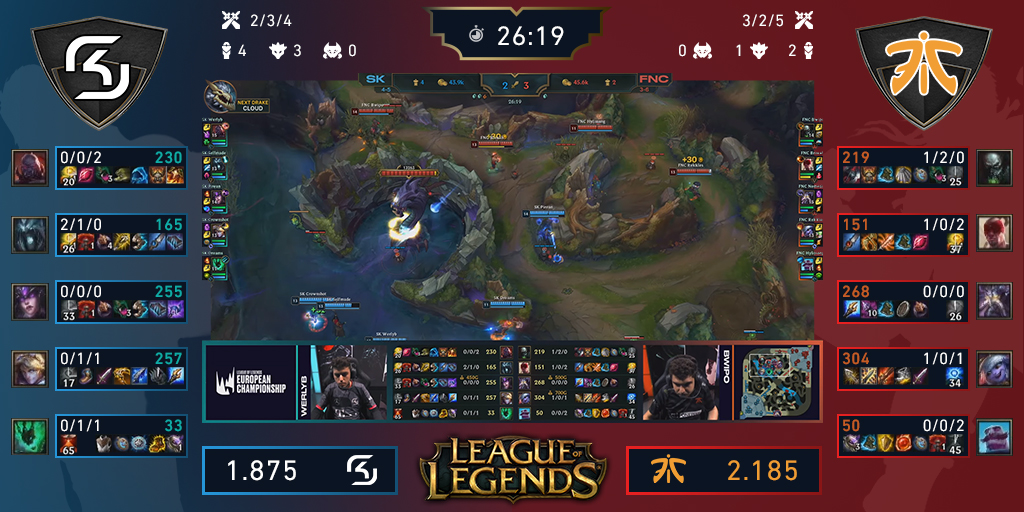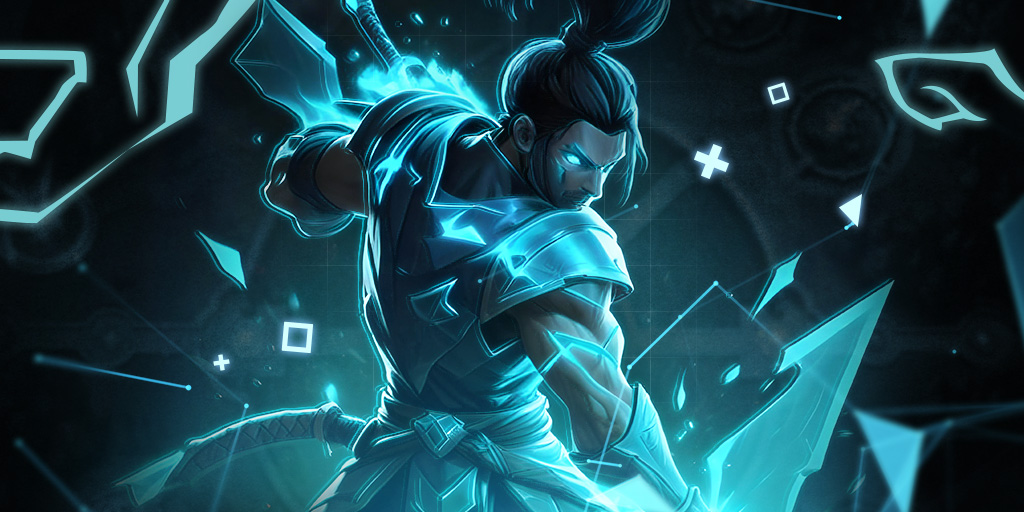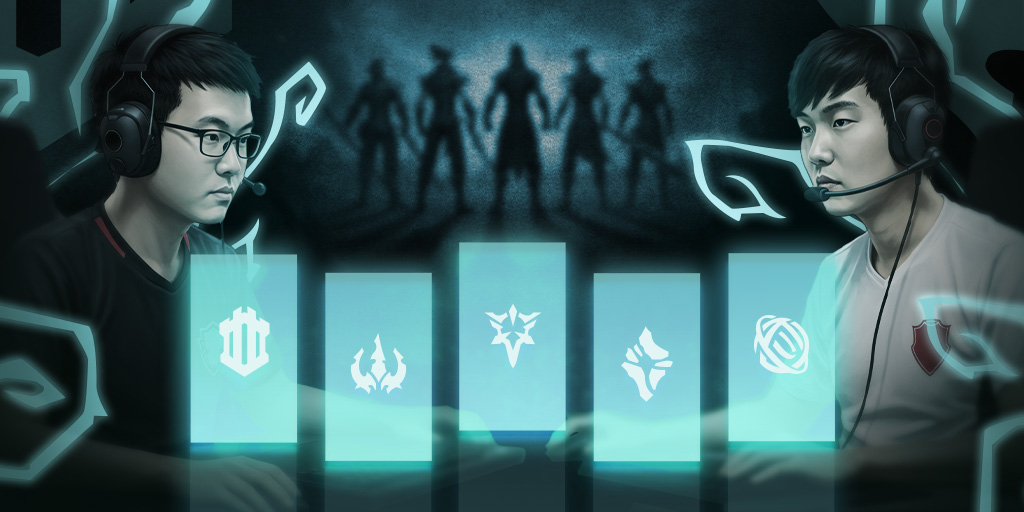Identifying the earliest possible stage of any prediction is important. Consider the pre-game element of LoL during the initial pick and ban phase - if Team B bans Team A’s most important Champion, this can have a tremendous impact on the game. Understanding multiple different stages to the game is vital when handling live betting on League of Legends.
Analyse the teams pre-game
As with any strategy, you will need to put in the legwork prior to the match starting. One of the greatest insights you can have is looking at a team’s history for any consistent mistakes they made prior to the match starting.
These mistakes could be as simple as a similar pattern in the champion picks and bans that they have made, or if they have a consistent lose streak to a particular team or just be on an existing losing spree. You can gauge how they feel prior to this match by checking their social media channels.
Pick and ban phase
The pick and ban phase is very important when it comes to live betting on League of Legends. This phase of the game can entirely define whether or not you’re on the right path for an accurate prediction.
The gold lead is important, but which champions have the gold is what matters most. If the support player is the one with the higher gold, theoretically this team might still be behind overall in the game.
This is one of the most documented processes in League of Legends. You can analyse a team’s thought pattern by their picks and judge whether or not they have done their research on the team they are playing against. Most teams will ban Champions that have they have seen teams do consistently well with.
Teams will also outright ban Champions that are considered to be “Overpowered”, preventing either team from playing that specific Champion. If both teams leave someone who is considered overpowered unbanned, then there is a high possibility that Team A will pick them in order to receive an edge in the match.
The main justification for this phase’s importance is that it will define the next 20 – 45 minutes of a match, where the Champion that is picked by which role and player, depends on whether or not a team is going for an early game or late game team composition.
The above typically applies to most, if not all competitive tournaments, such as, the LCS, LEC, and more.
The pre-match conclusion
League of Legends is a very complex game, the pre-match conclusion is predicting an outright win or you are making a conscious decision that this match would be more suitable for live betting.
You will need to come to a pre-match conclusion of how you assume the game is going to go, based on the final picks and bans. This is probably one of the hardest parts but if you have done research prior to the match starting, you’ll be able to make an educated guess.
You could reach the assumption, for example, that Team A doesn’t necessarily have the best luck using Kog’Maw as the Attack-Damage Carry. (ADC) You could also make the assumption that the other team would be aware of this and use it to their advantage by either having the team focus more heavily on that particular person or lane throughout the early game.
Additionally, you should consider Champions’ and players’ ability to roam around the map. Some teams consist of a heavy mobility team composition (comp), using Champions such as Twisted Fate and his Destiny ability in order to teleport around the map quickly. Usually, if a Champion has high mobility, then the team should be looking to close out the game early, which brings us to…
Understanding scaling
Understanding the difference between what makes a champion scale well or badly into the late game could be the difference between winning or losing in live betting, and should be taken very seriously when considering any strategy.
Some Champions start the game with higher base stats than others, and upon levelling up a few times, the base stats increase but some increase higher than others. Typically, a Tank Champion would see a higher increase in health, physical and magic defence, whereas an ADC would see a higher increase in their physical damage and their attack speed.
Theoretically, a team with fewer towers but more gold could still be in a worse position than their opposing team.
One example of a Champion that scales well into the late game would be Vayne (an ADC). Her early game consists of high cooldowns and not much in terms of mobility. She can easily get caught out with her main forms of escape being Condemn (E), Tumble (Q) and if she has her ultimate (Final Hour) she can combine that with Tumble to escape. By the late game, her Silver Bolts (W) and ability to engage with Tumble and Final Hour make her a force to be reckoned with.
An example of an early game Champion would be Pantheon, who is an incredibly powerful Top lane Champion, who combined with Aegis of Zeonia (W), Spear Shot (Q) and Aegis Protection (Passive) can make it incredibly hard to trade with. Once the early game progresses, his ultimate, Grand Skyfall, allows him to easily gank lanes, catch the opponents off-guard and potentially secure a kill.
However – as the game progresses and starts to exceed certain times within the game (Early to Mid-game, Mid to Late), Pantheon starts to fall behind in terms of his impact on the overall game. Even though he has potential to defeat many champions in a one on one situation, once the teamplay element falls into the match, he can be easily pushed out and defeated or ignored until the more important Champions are defeated.
Why gold doesn't show the whole picture
While the total gold a team has is usually a good way of knowing who is currently winning, it does not give you the complete picture. The gold lead is important, but which Champions have the gold is what matters most. If the Support player is the one with the higher gold, theoretically this team might still be behind overall in the game.
Objectives are often more important than kills in a game of LoL, you need to eliminate the towers to reach the enemy’s Nexus.
Theoretically, a team with fewer towers but more gold could still be in a worse position than their opposing team.
Using a hypothetical example, if Team A’s Support champion has a 5000 gold lead over Team B’s Support champion but Team B’s ADC has a 2000 gold lead over Team A’s ADC, Team B are still in a better position. This is because the ADC can make better use of the gold (purchase better items, make their champion stronger).
The impact of objective control
There are a number of objectives in a game of LoL that can give one team an advantage over the other – the most important non-critical objectives are the Dragon and the Baron (there are five types of Dragons: the Rift Herald, and Baron, who is the most powerful creature on the Summoner’s Rift).
Apart from the large amount of gold and experience rewarded to a team for successfully eliminating either, they also provide buffs. The Baron’s buff gives bonus attack damage, bonus ability power, Empowered Recall (an improved recall) as well as an aura that increases the power of nearby minions, which can make all the difference in important team fights.
A team’s vision and positioning in the minutes before a Dragon or Baron fight can sometimes ensure they kill either creature without the opposing team even realising.
A team that has a Baron buff can typically push out Towers and Inhibitors with little effort, or they can hard engage a team fight, allowing for the natural progression of the match. Due to the various buffs the Baron provides to the team, it can also turn the tide of a match, helping the losing team as it provides them with bonus stats as well.
Whilst Baron provides a limited time buff, the various Dragons in the game provide their own buffs, but in the form of permanent (Except the Elder Dragon) buff that last throughout the match.
In a game of LoL, there are five different types of Dragons: Cloud, Infernal, Mountain, Ocean and Elder Dragon. The first four provide one stack of “Dragon Slayer” which, depending on the Dragon that was slain, provides a different stat amplifying bonus.
The Elder Dragon provides a temporary buff which enhances existing Dragon buffs (by 50%) whilst also providing burn damage. If acquired by a team for the second time, it enhances existing Dragon buffs by 100% and does additional damage.
Upon being eliminated, both sides will have to wait a few minutes for the creatures to respawn – Dragons spawn every six minutes and the Baron every seven.
Baron and Dragon are incredibly significant to a game of League of Legends, as not only can you bet on the first team to kill a Dragon / Baron, but they can change the pace of the game as well, potentially moving the favour of the match to a losing team or pushing the winning team further in front.
A team’s vision and positioning in the minutes before a Dragon or Baron fight can sometimes ensure they kill either creature without the opposing team even realising. Even if the opposing team does realise, usually the team with more vision and map control has the advantage regardless.
We will cover the importance of vision control in a match in a later article.
Compulsory objectives
As well as these creatures, there are also buildings that are important to keep note of. Both teams start with 11 towers and three inhibitors. Towers are important in maintaining map control as they attack enemy minions and champions, as well as provide vision. Losing these towers makes playing aggressive a lot more difficult with no towers to fall back to. Theoretically, a team with fewer towers but more gold could still be in a worse position than their opposing team.
Updates are released often, and as such, paying attention to the latest ones will help bettors know what to look out for when betting on League of Legends.
Inhibitors are the structures that deny the other team from spawning super minions (powerful melee minion that can cause a lot of damage). Upon losing one inhibitor, the lane the inhibitor was located on will spawn these minions. They are important because they push the enemy minions back (due to being stronger) and create more map control for the team who spawned them. If the opposing team does not assign resources to deal with them, they can also potentially eliminate more towers and inhibitors.
Objectives are often more important than kills in a game of LoL, as you need to eliminate the towers to reach the enemy’s Nexus (the primary objective which a team must destroy to win the match) and even if your champions are behind, the buffs can make all the difference.
Keeping up to date
Everything we’ve covered is subject to change slightly as the game is being updated all the time. Updates are released often, and as such, paying attention to the latest ones will help bettors know what to look out for when betting on League of Legends.
Just like wards are now used differently and the scaling has been changed on a champion, things like the amount of gold received for things may change so it’s always important to keep informed about what’s happening with the game and what could happen in the future.
Want to learn more about League of Legends betting and how to get an edge over the bookmaker? Head back to Pinnacle’s Esports betting hub.



